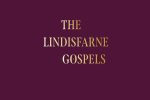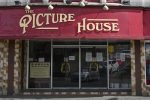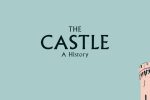Sharp, Dyson, Hoyle: Bradford’s Famous Trio of Astronomers
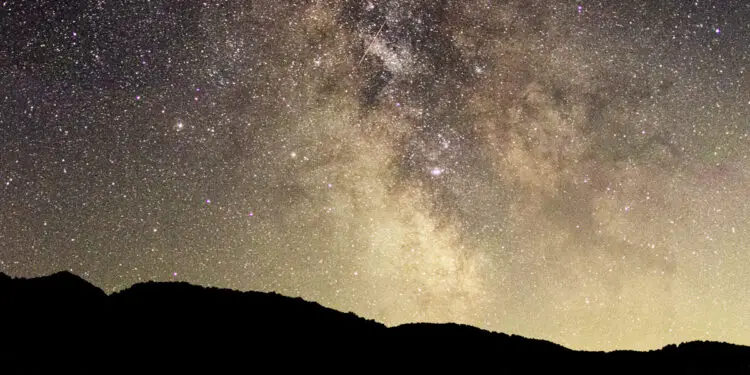
By Martin Greenwood
What have a crater on the moon, the Greenwich pips and the term ‘Big bang’ got in common?
Bradford is full of surprises and nothing is more surprising than these legacies of three of its famous sons who made their mark in astronomy. Many people’s image of Bradford is one of a city that in the 19th century became the wool capital of the world (‘Worstedopolis’ was the name given by historians at the time) and since then has seen better days – a classic case study of the Industrial Revolution.
My new book about Bradford gives the lie to this lazy view. Every Day Bradford provides a memorable story from its rich history for every day in the year, covering a wide range of topics, events, places and people from all walks of life. Born and bred in Bradford myself, time and again during my research I came across fascinating stories that I had not encountered before. The diversity of the city’s history amazes.
Bradford would not seem to be the place where you might find astronomers world-famous in their day. All three men, academically very bright, gifted in mathematics and astronomy, benefited from a Bradford education that was each typical of different eras – pre-Industrial Age (schooling for the privileged few), late Victorian (the scholarship boy) and inter-war years (ordinary state school pupil).
Abraham Sharp (1653-1742)
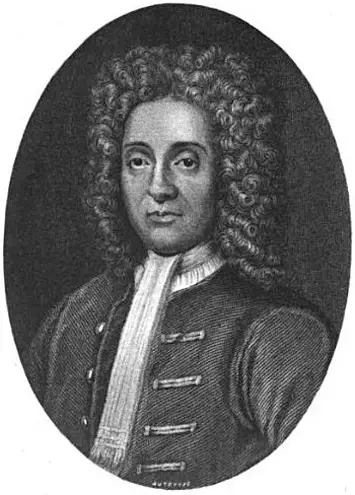
Picture of Abraham Sharp (1651–1742), the astronomer and mathematician
William Cudworth, Public domain, via Wikimedia Commons
The ninth child in the family, Abraham Sharp was born into one of Bradford’s most established families, who lived in the manor house at Horton Hall. Bradford was no more than a very small market town built around the ‘broad ford’ in the bowl of hills into which Bradford Beck flowed and thence to the River Aire, three and a half miles away. He was one of the privileged few in the mid-17th century to receive any education. He attended the small Bradford Grammar School that received its royal charter from King Charles II in 1662.
At school Sharp developed a love of mathematics, despite the text books being written in Latin. When he was 16 years old, his father apprenticed him to a textile dealer in York, but that life was not for him. After living there, he moved to Liverpool, London and Portsmouth, doing a variety of jobs. During his time in London, he developed a growing interest in astronomy. He started to work in particular as an assistant for John Flamsteed, who became a close friend and then in 1675 the first Astronomer-Royal. Sharp made himself indispensable and got to know other astronomers. He also calculated pi to 72 decimal places, briefly holding the record until it was overtaken to 100 decimal places in 1706.
March 1694 was the turning point in Sharp’s life and career. He had already just come back to Bradford, and his notebook gave no record why he returned. Now he declined an opportunity that someone much more ambitious would have grasped immediately to go back to London. He was never to leave Bradford until his death 48 years later.
He received a letter from Edmund Halley (of Halley’s Comet fame), the most eminent astronomer of the day, suggesting he should apply for the mathematical chair at Christ’s Hospital in London – ‘You may in my opinion stand as fair for it as you are deserving it, if it deserve you’. Some 15 years later, Sharp confessed to Flamsteed that ‘I had no inclination for so laborious a confinement, being better pleased with an easier though less advantageous employment’.
Reclusive by nature and obsessed with astronomy, Sharp maintained a close collaboration with a small number of distinguished, like-minded London-based friends, even when he returned to his home town. Now the owner of the family home of Horton Hall, he had an extension built to accommodate his obsession in studying the stars. It was called Sharp’s Observatory, the only such observatory in England outside Greenwich. Two and a half centuries later in 1963, this was sadly demolished with the hall, when its expensive upkeep was no longer viable.
Working from home like this, he nevertheless made a major contribution to astronomy. For example, he designed a new instrument, the Mural Arc, that enabled Flamsteed to measure the stars. In 1995 it was described by an eminent science historian as ‘the finest and most exact astronomical instrument constructed to date, and it won the praise of all who saw it’. The instrument also enabled him to compile the three-volume Historia Coelestis Britannica, the first catalogue of the stars, a task that Sharp took over on Flamsteed’s death to publish six years later in 1725.
Sharp became the earliest Bradfordian to be the subject of any biography when the pre-eminent Victorian local historian, William Cudworth, wrote a book about his life in 1889. The astronomer is also remembered with this tablet in Bradford Cathedral:
‘… being deservedly numbered amongst the most skilful mathematicians of his time, cultivated a lasting friendship with men most distinguished by a similar renown, especially with Flamsteed and the most illustrious Newton. He drew up the description of the heavens made by the former of these (Flamsteed) in (astronomical) tables of the greatest accuracy; he also published anonymously various writings and descriptions of instruments perfected by himself…’
Finally, a far less conspicuous memorial is also the most surprising – the naming of a lunar crater as Sharp’s crater, giving a place for Bradford on the moon some 250 years after Sharp’s death.
Sir Frank Dyson (1868-1939)
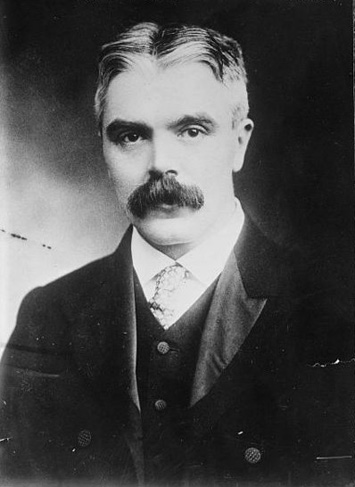
Sir Frank Watson Dyson (1868 – 1939), Bradford-born astronomer
Bain News Service, Public domain, via Wikimedia Commons
Over two hundred years after Sharp’s birth, Frank Dyson was born, in fact, in Leicestershire. When very young, he moved with his family to West Yorkshire. He, too, attended Bradford Grammar School, but times had changed. It was the early years of the school’s renaissance under the leadership of the legendary Rev WH Keeling, appointed in 1872 to rescue it from the doldrums. A headmaster for 44 years, he was to turn it into one of the best schools in the country.
Dyson was very well suited to such a school and an ideal role model for the renascent school and advertisement for a recent innovation. Dyson was the beneficiary of a new Governors’ scholarship, worth £16 per annum, introduced for sons of parents who could not afford the fees (Dyson’s father was a Baptist Minister). From the school he won a scholarship to Cambridge University, where he studied mathematics and astronomy.
After a first-class degree with the second-highest marks, he became a fellow at Trinity College in 1891. In 1894 he was appointed Senior Assistant at Greenwich Observatory. He made an important contribution to the International Astrographic Catalogue, a world-wide project involving photography of specified regions of the sky, followed by measurement of the positions of the stars recorded.
In 1905 he moved to Edinburgh when he was made Astronomer Royal for Scotland and Regius Professor of Astronomy at the university. Five years later he came back to Greenwich, this time as the ninth Astronomer Royal, and the only one to have held both Scottish and UK posts.
From 1900 when he observed the phenomenon from Portugal, Dyson became very interested in observing solar eclipses and was involved in six such expeditions. He realised that Einstein’s recently propounded theory of relativity could be subjected to an observational test at the 1919 solar eclipse. This predicted that stars seen near the eclipsed sun would appear to be shifted in position by a small, but measurable, amount. Dyson was able to demonstrate that the data supported Einstein’s predictions. This was a major turning point in scientific thought.
Every day we hear one of Dyson’s most interesting legacies – the Greenwich ‘pips’. ‘Beep’, ‘beep’, ‘beep’, ‘beep’, ’beep’, beep’ occurring on each of the five seconds leading up to the hour and on the hour itself … the first five pips each last a tenth of a second, while the final pip lasts half a second. The start of the final pip indicates the moment when the hour changes.
The pips on the hour are so familiar on the radio that you can easily believe that they have always existed, but before 5 February 1924 they had not. What is more is that they were created by a man schooled in Bradford.
The Greenwich Observatory had always been involved in time measurement. After the First World War, Dyson (now knighted) was approached by John Reith of the British Broadcasting Corporation that the Observatory should provide time signals to the public via the BBC. The idea of the Greenwich Time Signal – the world standard for time – was born.
Sir Fred Hoyle (1915-2001)
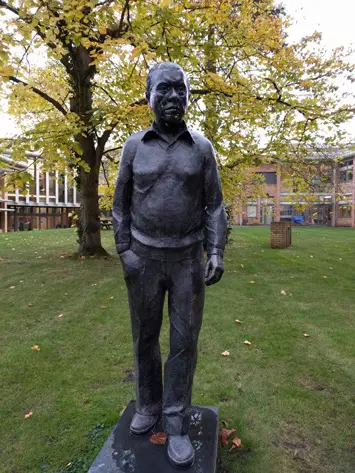
Institute of Astronomy, statue of Sir Fred Hoyle
vla22, CC BY-SA 4.0, via Wikimedia Commons
Hoyle came from the village of Gilstead, on the edge of the moors above Bingley, his father a cloth merchant and mother a piano teacher. He was educated at Bingley Grammar School, becoming its most famous pupil. He showed an early interest in astronomy and progressed to Cambridge University to read mathematics.
In the early 1950s Fred Hoyle was the world’s leading astrophysicist. He was most famously involved in the debate about the origins of the universe, framed by two opposing theories – ‘big bang’ or ‘steady-state’. He was a strong advocate of the ‘steady-state’ theory that the universe had always existed, and will exist for ever; as old galaxies die, they are replaced by new ones, created spontaneously in space. He contemptuously dismissed the ‘big bang’ theory, even coining the phrase in a 1949 talk on BBC Radio Three: ‘These theories were based on the hypothesis that all the matter in the universe was created in one big bang at a particular time in the remote past’.
After a war break working in radar at the Admiralty, he returned to Cambridge as lecturer in mathematics, but focused mainly on research into the structure and evolution of the stars. This took him into the thinking behind the ‘steady-state’ theory. He was very aggrieved much later in 1983 to miss out on a Nobel Prize, which went instead to his American collaborator, when they explained how all the materials found on earth and elsewhere have been formed inside stars. Many of Hoyle’s colleagues, too, were mystified that he had not been included.
In 1958 he became professor of astronomy at Cambridge and founded its Institute of Theoretical Astronomy, being director from 1967 to 1972. He resigned from Cambridge amidst arguments about funding, but collected many honours, including presidency of the Royal Astronomical Society (1971-1973), a knighthood (1972) and the royal medal at the Royal Society (1974) where he had been made fellow in 1957.
Alongside his research in astronomy, he developed a side-line from his scientific research in writing over 20 books on science fiction, many co-authored with his son, including his most famous The Black Cloud (1957) and A for Andromeda (1962) made into a TV series.
Although the ‘steady-state’ theory had been discredited by the time of his death, Hoyle was a very influential and highly respected astronomer.
Sharp’s Crater, Dyson’s pips, Hoyle’s ‘Big bang’
Here we have three objects to illustrate just one small part of Bradford’s heritage. Pushing at the frontiers of knowledge, each of these gifted men explored the outer limits of the known universe in their day – a credit to their Bradford education.
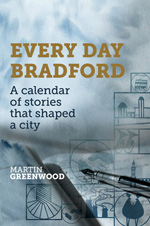 Adapted from ‘Every Day Bradford: A Calendar of Stories that Shaped a City’ by Martin Greenwood (published 2021) Softback £18.50, Hardback £22.50 Kindle £9.99.
Adapted from ‘Every Day Bradford: A Calendar of Stories that Shaped a City’ by Martin Greenwood (published 2021) Softback £18.50, Hardback £22.50 Kindle £9.99.
Martin Greenwood was born and brought up in Bradford. He was educated at Bradford Grammar School and New College, Oxford University. During his career, he wrote widely on the business implications of information technology.
In 2018 he published a biography of his grandfather – ‘Percy Monkman: An Extraordinary Bradfordian’. In researching his family’s past, he discovered what a fascinating history Bradford possesses.
In this new book Martin shares what he has learnt about the city. Bradford’s rich history is presented in a unique way – a memorable story for every day in the year. Never before have such stories about everyday life in and around Bradford across the centuries been brought together in one volume. It is a remarkable kaleidoscope of life in Martin’s home city from medieval times to the current day.

